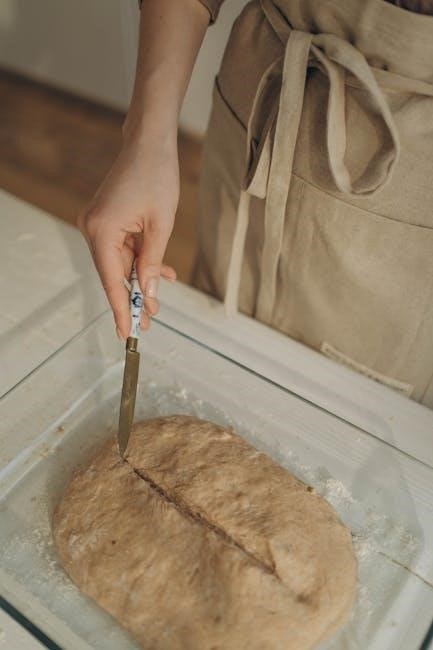What are Proof Marks?
The Standard Directory of Proof Marks by Wirnsberger is a crucial resource․ This comprehensive directory helps in identifying the origin of firearms․ It achieves this by cataloging various historical proof marks․
What are Proof Marks?
Proof marks are official stamps applied to firearms․ They indicate that the weapon has undergone testing․ These tests ensure the firearm meets safety and quality standards․ The Standard Directory of Proof Marks aids in decoding these marks․ It shows their historical and national context․ It is a valuable tool for collectors, historians, and anyone interested in firearms․ The marks help determine the manufacturer’s location․ They also show the type of proof the firearm underwent․ Different countries have different proof marks․ These marks reflect varying regulations․

The Standard Directory of Proof Marks by Wirnsberger
The Standard Directory of Proof Marks by Wirnsberger is a respected guide․ It helps to identify firearms manufacturers through their proof marks․ This directory is a detailed collection of marks used across different countries․ These marks include those used throughout history․ It is helpful for firearm enthusiasts, historians, and legal experts․ It provides a comprehensive overview․ The book enables the identification of the origin of the firearm․ It includes the type of proof applied to the gun․ It is a crucial resource for understanding firearm history and regulations․
Proof marks are essential for identifying the nationality․ They assist in determining the origin of firearms․ This is especially useful when other markings are absent․ It aids in tracing manufacturers․
Importance of Proof Marks
Determining Nationality of Manufacturers
Proof marks play a vital role in determining the nationality of firearm manufacturers․ These marks, as documented in resources like Wirnsberger’s Standard Directory, provide crucial clues․ They act as identifiers when other markings are absent or unclear․ By examining the specific proof marks present on a firearm, experts can trace its origin․ This is essential for historical research, legal investigations, and understanding the global arms trade․ Furthermore, understanding the origin helps ensure compliance with international regulations․ Proof marks help in maintaining accountability within the firearms industry․ They also assist in tracking the movement of weapons across borders․

Historical Context of Proof Marks
Pre-Gun Barrel Act of 1813 (Britain)
Before 1813, Britain lacked national rules for gun barrel manufacturing and proofing․ Wirnsberger’s Standard Directory helps understand the evolution․ This highlights the significance of the Gun Barrel Act in standardizing practices later on․
Pre-Gun Barrel Act of 1813 (Britain)
Prior to the Gun Barrel Act of 1813, a uniform system was non-existent, impacting firearm safety and quality control․ Wirnsberger’s Standard Directory provides context for understanding the disparities in proof marks․ These marks identify the manufacturer and type of firearm․ The absence of standardized regulations led to inconsistencies in testing methods and barrel construction․ This created risks for users and challenges in tracing the origins of firearms․ The Act sought to address these issues by establishing national standards for gun barrel production and proofing processes across Britain․
Examples of Proof Marks by Country
Belgian Proof Marks (Perron)
Belgian proof marks, such as the Perron, are detailed in Wirnsberger’s Standard Directory․ The Perron indicates inspection and definitive proof․ It helps determine the gun’s origin․
Belgian Proof Marks (Perron)
The Perron, a significant Belgian proof mark, features prominently in the Standard Directory․ It served as the sole proof mark until 1810․ Subsequently, it became an indicator of inspection from 1853 onward․ Wirnsberger’s directory provides detailed illustrations․ It also gives historical context to the Perron․ This aids in identifying Belgian-manufactured firearms․ The directory also helps in determining the period of manufacture․ The Perron can be any of three marks, which are found between 1810 to the present․ This mark provides crucial information for collectors and researchers․ It is essential for understanding firearms’ history and provenance․
Italian Proof Marks
The Standard Directory of Proof Marks also includes Italian proof marks․ The directory provides a comprehensive list of these marks․ It specifies the proof house and the type of proof․ These marks are crucial for identifying firearms․ This is especially true when other markings are absent․ Wirnsberger’s directory offers detailed information․ It also offers historical context․ This allows for accurate identification and dating of Italian firearms․ Understanding these marks is essential․ It is essential for collectors, historians, and anyone researching firearms․ The directory can be downloaded in PDF format․ This makes it readily accessible․
The Standard Directory of Proof Marks catalogs different types of proof marks․ These include provisional, standard, and double proofs․ These categories indicate testing levels․ The directory, often available as a PDF, is invaluable․
Provisional Proof
Provisional proof, as detailed in resources like the Standard Directory of Proof Marks, indicates an initial stage․ This initial assessment often applies to unfinished firearms, especially short-barreled guns․ The PDF documents covering proof marks often illustrate these provisional markings․ These markings help trace the firearm’s origin․ They appear before the application of standard proof․ Examining these marks requires a comprehensive guide․ Wirnsberger’s directory proves an invaluable reference․ Collectors and historians rely on such resources․ These documents are usually available in PDF format for accessibility․
Standard Proof
Standard proof marks, often found via PDF resources, signify a firearm has passed required safety tests․ The Standard Directory of Proof Marks details these markings․ They confirm compliance with regulations for finished guns․ These markings are essential for verifying the firearm’s safety․ Resources in PDF format often showcase examples of these standard proof marks․ Manufacturers apply these marks after rigorous testing․ Identifying standard proof requires careful examination․ Wirnsberger’s directory provides comprehensive insights․ Collectors and enthusiasts rely on these resources․ These are vital for responsible ownership․

Types of Proof Marks
Double Proof
Double proof, as detailed in the Standard Directory of Proof Marks, indicates enhanced testing․ This elevated testing level is often performed on finished and joined barrels․ A double proof mark signifies superior safety standards․ PDF resources may offer visual examples of these marks․ These marks are particularly relevant for high-powered firearms․ Double proof ensures greater reliability and safety․ Wirnsberger’s directory thoroughly explains the significance․ These marks are crucial for identifying premium-grade firearms․ Collectors and enthusiasts often seek double proof marks․ Recognizing double proof marks require careful scrutiny․ These marks offer assurance regarding the firearm’s quality․

Proof Marks on Different Firearms
Proof marks vary depending on the firearm․ They are also applied to finished guns after manufacturing․ A standard proof signifies compliance․ Refer to Wirnsberger’s Standard Directory for detailed information․
Finished Guns
Firearms that have completed the manufacturing process receive proof marks to certify their safety․ These marks, detailed in sources like Wirnsberger’s Standard Directory, indicate the gun has passed required testing․ A standard proof on a finished gun confirms it can withstand specific pressure levels․ Double proof is also common on these guns․ The placement and type of proof mark offer clues to the gun’s origin and testing standards․ Examining these marks on finished guns provides valuable insight․ This helps determine a firearm’s history and regulatory compliance, as outlined in comprehensive proof mark directories․
Unfinished Short Barreled Guns
Unfinished short-barreled guns often undergo provisional proof before completion․ These guns display distinctive proof marks, cataloged in resources․ Wirnsberger’s Standard Directory is a great tool․ These marks differ from those on finished firearms․ The provisional proof ensures the partially completed barrel meets basic safety standards․ This step is vital before further manufacturing․ The presence of these marks provides insights․ It shows that a firearm was tested during its production phase․ Examining these marks with resources is critical․ It helps to understand manufacturing stages, and regulatory compliance, as detailed in proof mark PDF resources․
Proof Marks and Regulations
Proof marks are intrinsically linked to firearm regulations․ These regulations mandate the proofing of firearms to ensure safety․ Compliance with these regulations is verified through proof marks․ Each country has its own set of regulations․ This dictates the specific proof marks used․ The Standard Directory of Proof Marks by Wirnsberger is invaluable․ It deciphers these marks․ The directory also helps understand their regulatory context․ These regulations have evolved over time․ For example, the Gun Barrel Act influenced early British standards․ Today, international agreements further standardize proofing procedures․ Understanding these regulations is crucial․ It is crucial for collectors, manufacturers, and legal experts alike․
The Standard Directory of Proof Marks by Wirnsberger is authoritative․ Many seek a PDF version online for easy access․ These PDF resources help identify and understand various proof marks․
Finding Proof Mark Information
PDF Resources for Proof Marks
Finding reliable information on proof marks can be challenging, but PDF resources offer a convenient solution․ The Standard Directory of Proof Marks, ideally in PDF format, provides extensive details․ This includes images and descriptions of various proof marks used across different countries and time periods․ Many websites offer PDF downloads focusing on educational books and textbooks․ Ensure the source is reputable to guarantee accuracy․ Free PDF downloads might be available for educational purposes․ These resources are invaluable for researchers, collectors, and anyone interested in the history and identification of firearms․ Always verify information․